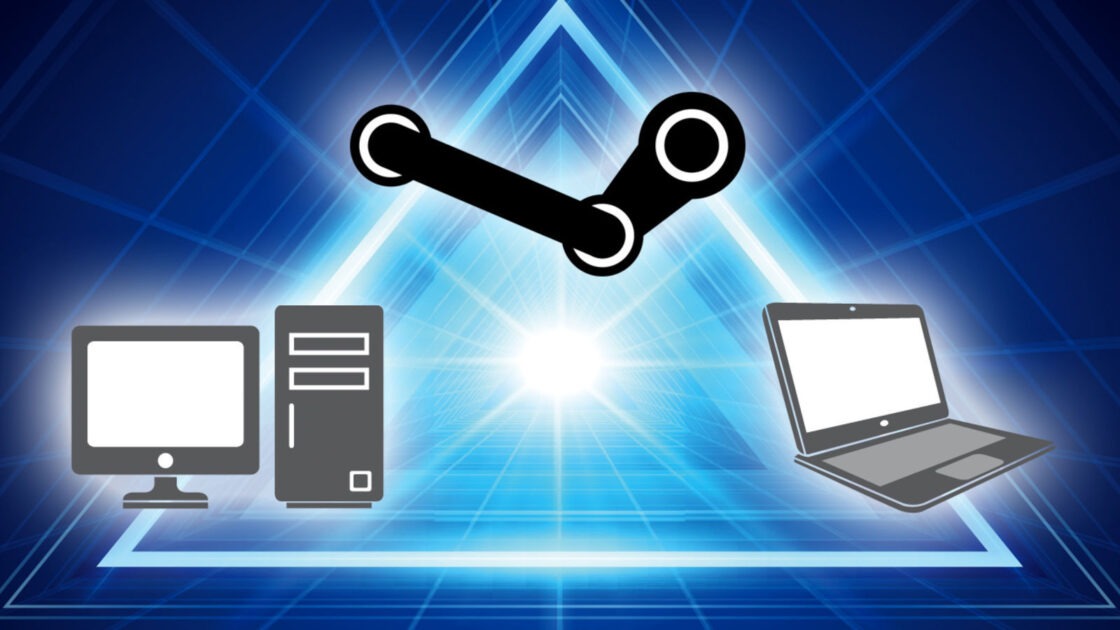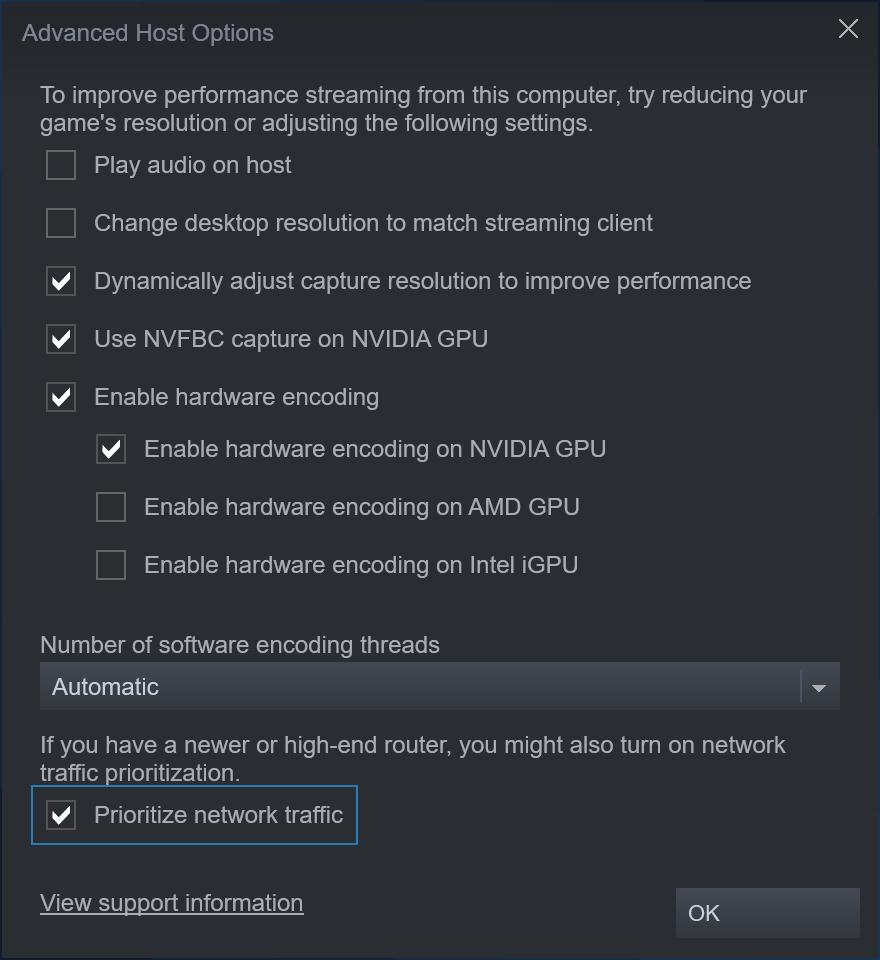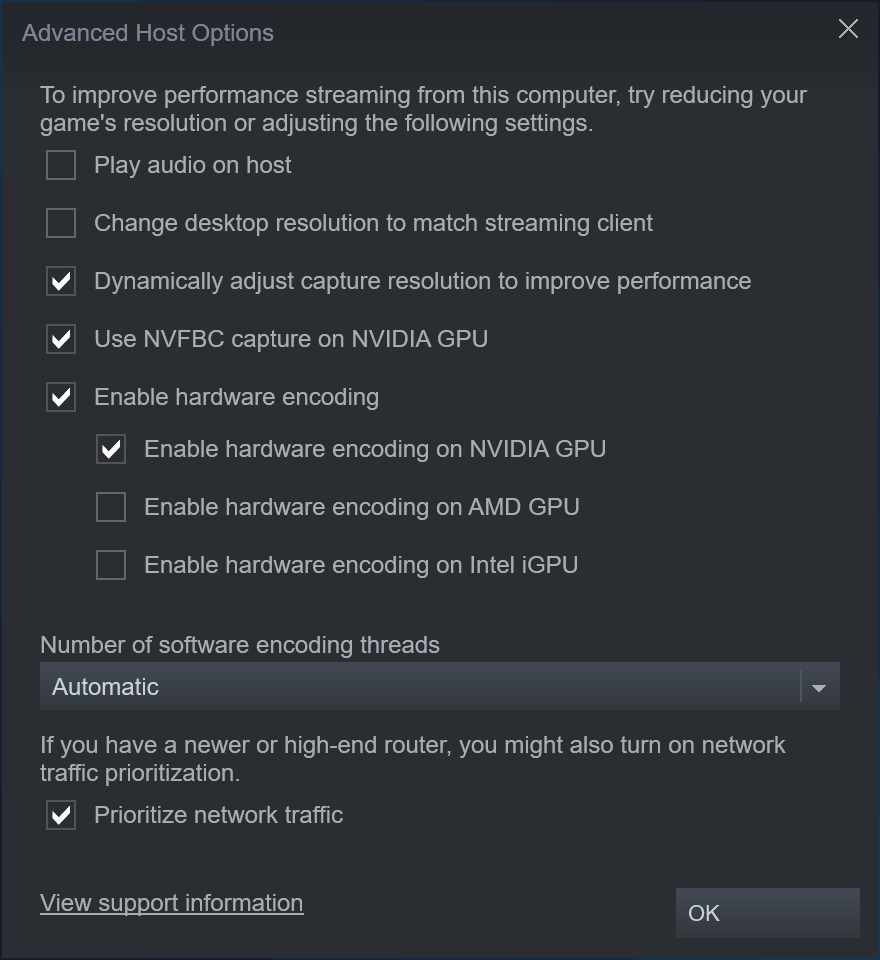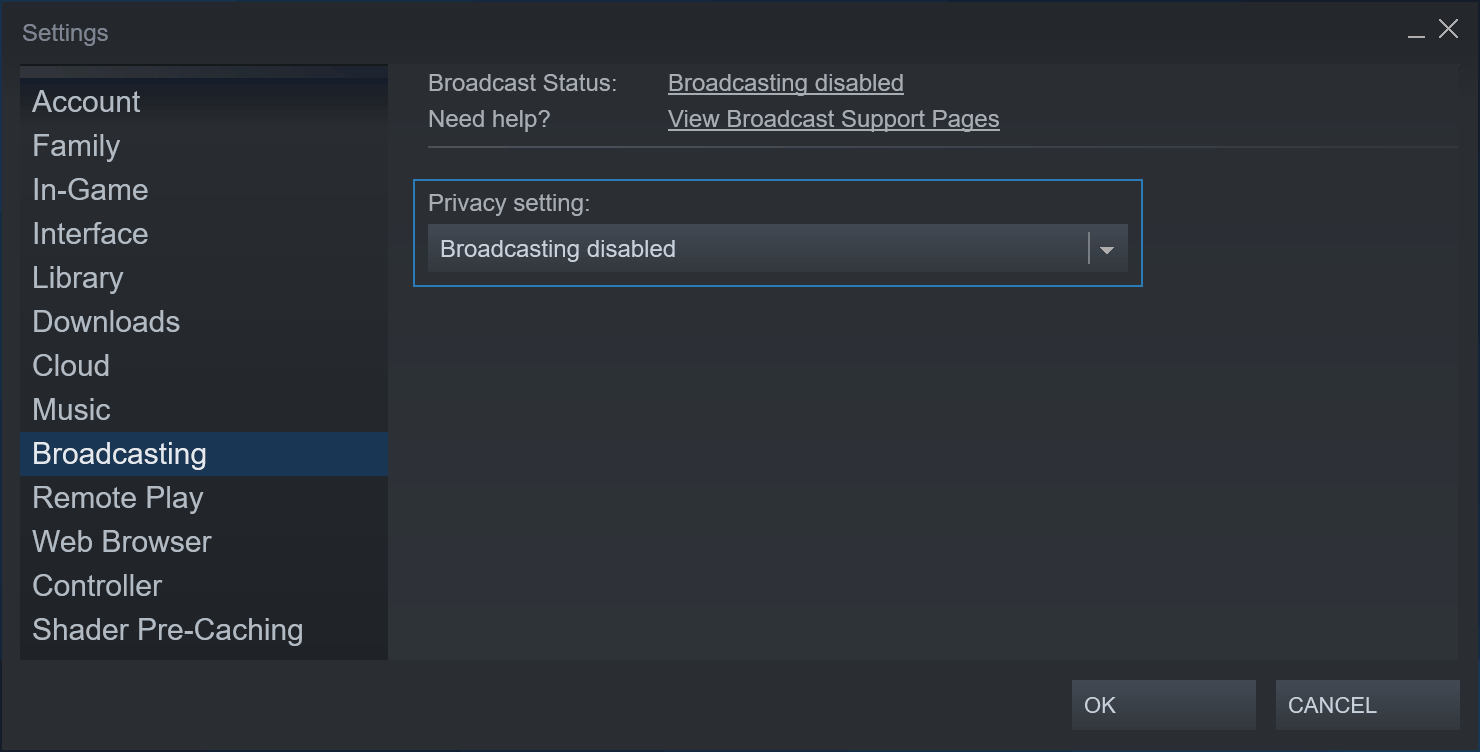Steam Remote Play: it just works (sometimes)
Reading time: 4 minutesFive things to try if your Remote Play… stops

Steam Remote Play is a wonderful thing: any two computers logged into the same Steam account can connect together, and one can “play” the other’s games “remotely” (see what they did there?). So if you’re a fat slob like me and can’t be bothered to crawl upstairs to your PC, with Remote Play you don’t have to: just make sure your powerhouse is switched on and connect to it through another PC, laptop, tablet, or phone, and away you go.
Or… that’s how it should go, in theory.
You see, Steam Remote Play is a wonderful thing… when it works. And so far, it seems to decide on a whim, with no rhyme or reason, whether it will or won’t work in any given location, at any time of day, or with any software title.
Sometimes, it works flawlessly; my experience with CK3 on it is just about flawless – there is occasional stuttering and artefacting, but it’s rare and never game-breaking. It’s an absolute joy.
But with some other games, it just refuses to cooperate. Let’s talk about Fallout 4.
I think it’s fair to say that I probably shouldn’t have expected much success with a game from the studio that brought us this. And this. And these. But I am absolutely astonished that no matter what I do to the settings, both in-game and in the client settings themselves, nothing makes it run well enough to play. Unless you enjoy experiencing Fallout 4 through the eyes of someone trapped in a blizzard, you ain’t getting to experience Fallout 4 from your sofa any time soon.
Fallout 4 is just one example. Even things like Parkitect, which certainly isn’t the most graphically intensive game in the universe, struggles with Remote Play. It may have something to do with how well optimised the game is, but confirming that would require more research that I’m willing to do for this article.
So what settings should you use for the best experience? Well, like I said earlier, for some games it won’t matter, but these five tweaks should be enough to get you started.
1. Prioritize network traffic

This is an absolute must. With this option turned on, Steam will make sure its data packets get top billing going through your router, which makes a huge amount of difference when streaming.
2. Enable hardware encoding

If you’re streaming from a beefy gaming PC, turning this on is absolutely worthwhile. Normally, your PC will use its CPU to encode the stream, but if you’ve got a decent graphics card, using GPU encoding will give you a much cleaner image. (At this point, I must admit I have no idea what the NVFBC option does, but turning it on has made no noticeable difference to my performance so far.)
3. Disable broadcasting

I’ve heard mixed things about this setting, but let me give you the rundown of what I understand about it. Steam has an inbuilt broadcasting service, meaning when you’re playing a game, anyone in your friends list (or outside of it, if you choose) can hop in and watch a live stream of your game. As rumour has it, this service is broadcasting at all times, which understandably has a negative effect on your bandwidth. I’m not convinced this is true – I’ve certainly seen no official sources touting this – but it does appear to have made a difference to my experience with Remote Play.
4. Use ethernet, not WiFi, wherever possible
Wired networking is faster. Simple. The end. Ideally, the device you’re streaming from should be wired directly into your router for a good streaming experience, and both the streaming and client device should be wired for the absolute best experience.
5. Save yourself some effort
The worst thing about remote streaming anything is something breaking, or a setting needing changing, meaning you have to trudge all the way to your steaming PC to fix it. So don’t.
Add a simple programme (I use Firefox) into your host device’s Steam library as a non-Steam game, and use it as a makeshift remote desktop connection. Launch the program, minimise it, and bam: you’re remoting in to your PC and can fiddle with whatever you need to from the comfort of your client device. And this works stunningly. It even allows you to shut down the streaming device remotely (which oddly isn’t included in Steam, like it is on the Steam Link).
Just be sure not to launch Task Manager whilst remoting in: for some reason, this completely breaks Remote Play, and you’ll have to go to your streaming device to close Task Manager before you can do anything else.

